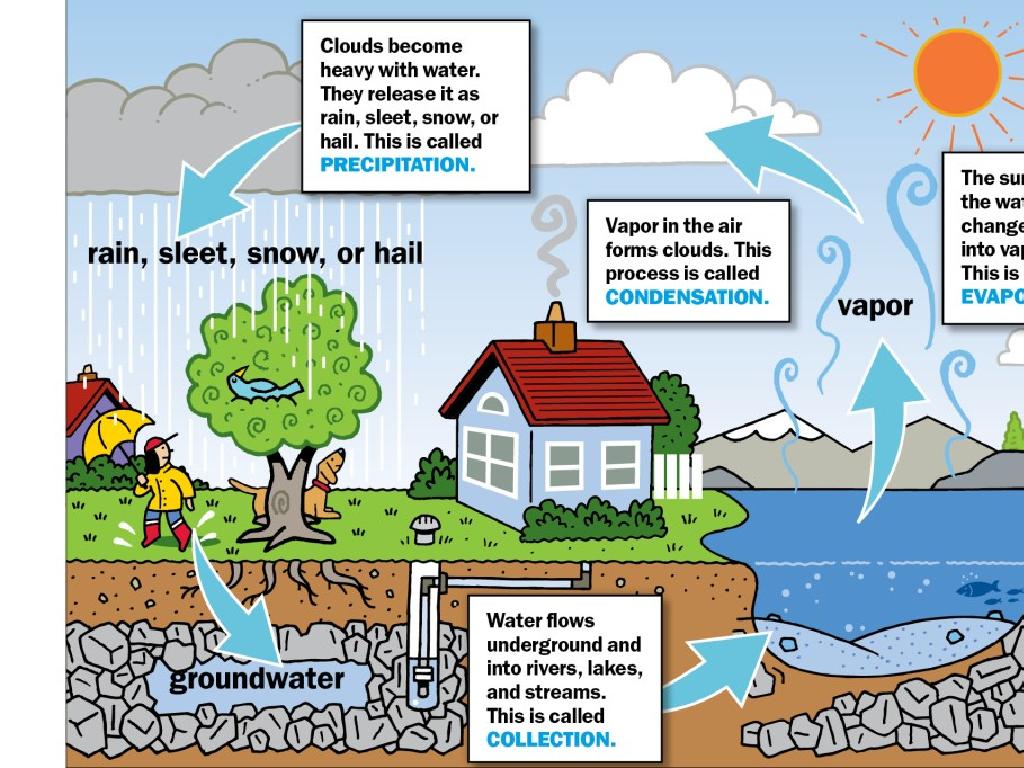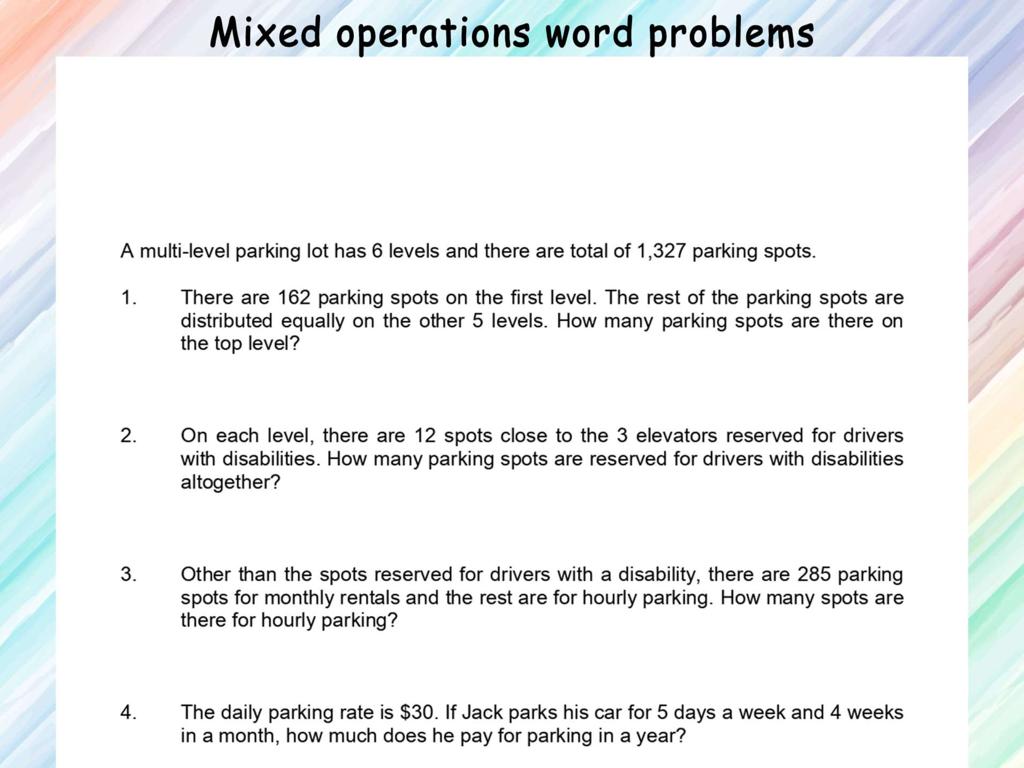Commas With Series, Dates, And Places
Subject: Language arts
Grade: Eighth grade
Topic: Commas
Please LOG IN to download the presentation. Access is available to registered users only.
View More Content
Mastering Commas: Series, Dates, and Places
– Comprehend punctuation significance
– Commas in series, dates, places
– Series: ‘apples, oranges, bananas’. Dates: ‘July 4, 1776’. Places: ‘Paris, France, Europe’
– The impact of commas on clarity
– Commas can change meaning, e.g., ‘Let’s eat, grandma!’ vs. ‘Let’s eat grandma!’
– Enhancing writing with commas
|
This slide introduces the importance of commas in writing, focusing on their use in series, dates, and places. Emphasize that punctuation, especially commas, is powerful in providing clarity and preventing misinterpretation. Provide examples to illustrate how commas are used to separate items in a list, to denote specific dates, and to distinguish between parts of an address or location. Highlight the potential for drastically changing meanings with and without commas, reinforcing their role in clear communication. Encourage students to practice using commas in these contexts to enhance their writing skills.
Commas in a Series
– Understanding a series
– A series is a list of 3 or more items, often words or phrases.
– Commas in lists
– Commas help readers see items separately, like in a shopping list.
– Example: Recipe ingredients
– For a cookie recipe: flour, sugar, eggs, and chocolate chips.
– Practice with class activity
|
This slide introduces the concept of using commas in a series to separate items in a list, which is a fundamental aspect of punctuation in writing. Start by explaining what a series is, emphasizing that it involves three or more items. Then, discuss the role of commas in making the separation of items clear to the reader, preventing confusion. Use the example of listing ingredients in a recipe to show a practical application of this rule. Finally, engage the students in a class activity where they create their own lists using commas correctly. This could involve writing ingredients for their favorite dish, listing activities for a perfect weekend, or creating a to-do list for a project.
Practice with Series: Crafting Sentences
– Write a sentence listing favorite hobbies
– Use commas to separate each hobby
– For example: Reading, writing, and painting are my favorite hobbies.
– Partner up to review each other’s sentences
– Make sure each hobby in the series is separated by a comma
– Discuss the importance of correct comma usage
|
This slide is for a class activity focused on the practical application of commas in a series. Students will write a sentence that includes a list of their favorite hobbies, using commas to separate each item. After writing their sentences, they will pair up with a classmate to check for correct comma usage. This peer review process not only reinforces the lesson but also encourages collaboration and communication among students. As a teacher, circulate the room to offer guidance and ensure understanding. Possible variations of the activity could include creating series with different themes, such as favorite foods, books, or vacation spots. Emphasize the clarity that proper comma usage brings to a list.
Commas with Dates
– Correct format for writing dates
– Dates should be written as Month Day, Year
– Commas in days, months, and years
– Use commas after days and years
– Example: July 4, 1776, significance
– Independence Day shows comma use in dates
|
This slide focuses on the correct use of commas in dates for eighth-grade Language Arts students. Start by explaining the standard format for writing dates in the U.S., which is Month Day, Year. Emphasize the use of commas to separate the day from the month and the year when it is part of a sentence. Provide the example of July 4, 1776, to illustrate the rule, pointing out the comma after ‘July 4’ and after ‘1776’. Explain that the second comma after the year is necessary when the date is within a sentence. Encourage students to practice by writing several dates with commas and to find examples in their reading materials.
Practice with Dates: Using Commas
– How to punctuate dates correctly
– Class Activity: Write today’s date
– Use today’s date in a creative sentence
– Understanding the role of commas
– Commas separate day from month, and the year
– Discuss the importance of commas in dates
– Why are commas crucial in dates? Let’s explore
|
This slide is aimed at practicing the correct punctuation of dates with commas. The class activity involves students writing a sentence that includes today’s date, correctly punctuated with commas. This exercise helps students understand the practical application of commas in written communication. Discuss the reasons why commas are used in dates, emphasizing clarity and the separation of day, month, and year. Encourage students to think about how omitting commas could lead to confusion. Provide examples and facilitate a discussion on the importance of commas in ensuring the readability and understanding of dates in writing.
Commas with Places
– Parts of a place in an address
– Address elements: street, city, state, country
– Commas separate city, state, country
– Use commas after city and state names
– Example: Orlando, Florida, USA
– ‘Orlando, Florida, is known for its theme parks.’
|
This slide aims to teach students how to correctly use commas when writing addresses or mentioning places that include city, state, and country. Start by explaining the different parts that make up a place’s address. Emphasize the importance of using commas to separate these elements, which helps clarify the location and improves the readability of the sentence. Use the example provided to show how commas are placed after the city and state. Encourage students to practice with additional examples and to bring in addresses from around the world to see the application of this rule in various contexts.
Practice with Places: Writing Addresses
– Writing addresses correctly
– Use commas to separate city, state, and country
– Class activity: Compose an address
– Include a city, state, and country in your address
– Peer review for comma accuracy
– Exchange with a classmate to check commas
– Understanding the importance of commas in addresses
– Commas help clarify the parts of an address
|
This slide is designed for a class activity focused on the practical application of commas in addresses. Students will practice writing an address that includes a city, state, and country, using commas to separate each element. After writing their own addresses, they will exchange papers with a peer to review and ensure correct comma usage. This activity not only reinforces the rules of comma placement but also emphasizes the importance of punctuation in conveying clear and precise information. For the teacher: Prepare a worksheet with guidelines for address formatting, provide examples of correct and incorrect comma usage, and facilitate the peer review process to ensure constructive feedback.
Commas Challenge: Mastering Punctuation
– Engage in punctuation practice
– Correct commas in a complex sentence
Identify where commas are missing or misused
– Discuss corrections as a group
– Explain your reasoning
Share the logic behind your comma placements
|
This slide introduces a class activity focused on applying the rules of comma usage in series, dates, and places. Students will individually work on correcting the punctuation in a provided complex sentence. Afterward, they will form groups to discuss their corrections and explain the reasoning behind their choices. This activity encourages critical thinking and collaborative learning. As a teacher, facilitate the discussion by providing guidance on comma rules and ensure each student participates. Possible sentences for practice could include lists of items, dates in different formats, and locations within a sentence. The goal is to reinforce the correct use of commas through practical application.
Conclusion: Mastering Commas
– Recap: Commas in series, dates, places
– Series: red, white, and blue. Dates: July 4, 1776. Places: Paris, France.
– Importance of correct comma usage
– Avoids confusion, clarifies meaning.
– Preview: Commas in complex sentences
– Compound: joining two sentences. Complex: with dependent clauses.
– Homework: Identify comma uses
|
As we wrap up today’s lesson, review the key rules for using commas in series, dates, and places. Emphasize the importance of proper comma usage to avoid ambiguity and maintain clarity in writing. Give examples to illustrate how missing commas can change the meaning of a sentence. Introduce tomorrow’s topic on using commas with compound and complex sentences, and assign homework where students find sentences using commas and identify the rules applied. This will prepare them for a deeper understanding of comma usage in more complex sentence structures.
Exit Activity: Comma Hunt
– Find and correct commas in a passage
– Pair up for comma detective work
– Discuss comma rules while correcting
– Look for series, dates, and places
– Share findings with the class
|
This class activity is designed to reinforce the rules of comma usage in series, dates, and places. Students will work in pairs to foster collaboration and peer learning. Provide each pair with a short paragraph that has several comma errors. Encourage them to discuss the comma rules as they identify mistakes. After the activity, have each pair share one corrected sentence with the class, explaining the comma rule applied. This will help students learn from each other and gain a better understanding of practical comma usage. Possible variations of the activity could include having different paragraphs for each pair, focusing on one specific rule of comma usage, or making it a competition to see which pair can find and correct the most errors.





